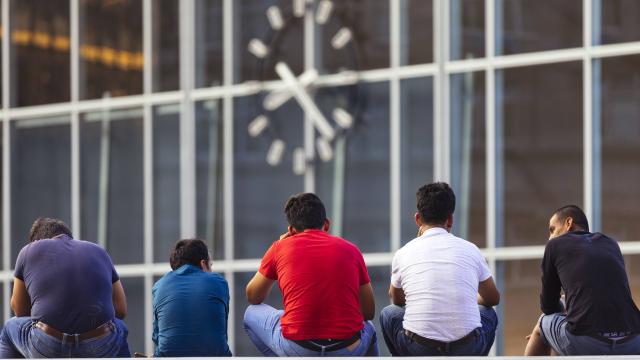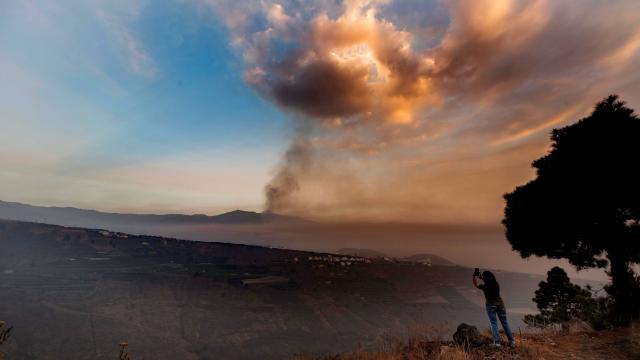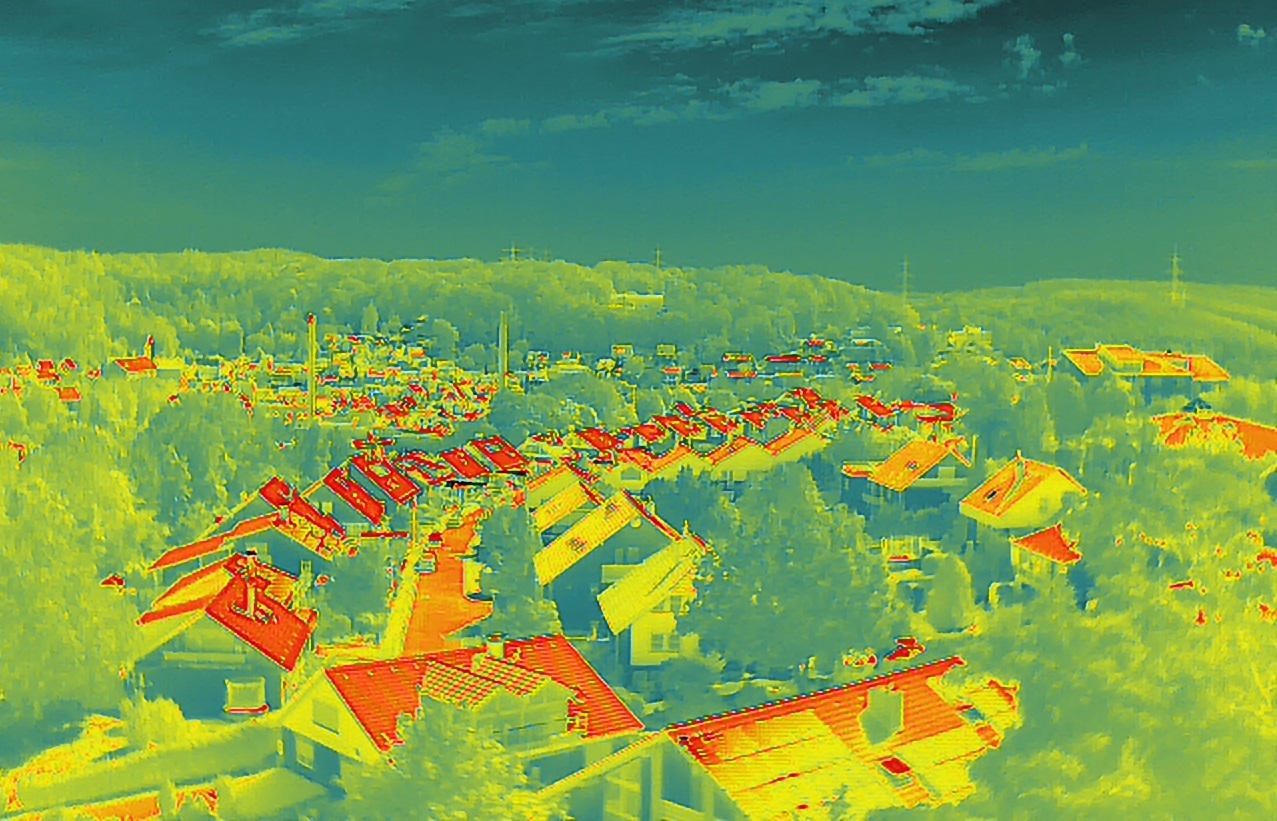

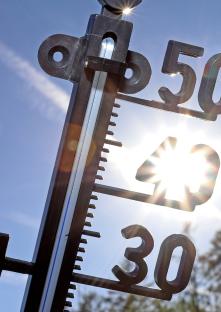

Visions of the Urban Climate: Understanding and planning for climate adaptation
1.5 degrees, two degrees, three degrees warmer – what do such forecasts actually mean in concrete terms? How does it feel to live in a hotter, drier climate, not just for two weeks on vacation, but all the time? Many people only have an abstract idea of how global warming will change their immediate environment. No one can predict in detail what life will be like in Kaiserslautern, Mainz, Trier, and Ludwigshafen in 2050 or 2080. However, Sascha Henninger at least wants to give an idea of how our cities might change by the middle to the end of the century compared to what we have been used to in the past.
The professor of Physical Geography is an expert on the impact of climate change on cities. He has translated calculations and forecasts into a tangible concept known as climate twins: these are comparison locations, for example cities in Rhineland-Palatinate, whose current climatic conditions correspond to what models predict for our region in the coming decades.
Unsurprisingly, these time-shifted climate counterparts are located in southern regions such as southwestern France, Spain, and Italy. Kaiserslautern's climate twin in 2080 is today's Calatayud near Zaragoza in Spain, while Landau's twin is the Italian municipality of Casalfiumanese, not far from Bologna. Mainz is approaching the climate of Toulouse, and Koblenz that of Orthez in France. Trier is located in southwestern central France near Brive-la-Gaillard, while Ludwigshafen is “moving” to Umbria in Italy, near the city of Terni.
Concrete images instead of abstract forecasts
“When I run models for Kaiserslautern and demonstrate that the climatic conditions are shifting deep to the south-west, towards Spain, many people can imagine what that means,” says the urban climatologist. “People associate Spanish cities with hot summers, mild winters, and a certain type of vegetation.” Henninger does not want to paint a scary picture, but rather convey a sense of what the predictions mean. “Climate protection alone is no longer enough. Climate change is happening, even if we could reduce greenhouse gas emissions to zero today. We need to start thinking about how we can adapt to a changing climate now. To do that, it's important that we have an idea of what we need to prepare for.”
Based on high-resolution simulations
The climate twin model is based on data from the international CORDEX (Coordinated Regional Climate Downscaling Experiment) project, which calculates high-resolution climate simulations for different regions of the world. Together with colleagues from Forschungszentrum Jülich and RWTH Aachen University, Henninger has further developed an algorithm that gives particular weight on temperature and precipitation data in particular and makes the climate twin approach specifically usable for urban development issues.
"We are focusing more on the planning aspects than the ecological aspect. The model enables practical conclusions to be drawn for architects, urban development, and urban planning. If I know that Kaiserslautern will have a climate like northern Spain in the future, then I can look at how people there have dealt with heat and low rainfall in summer for centuries."
- Sascha Henninger -
This provides inspiration for climate adaptation measures – from structural redesigns to social structures. For our cities, this could mean providing more shade through sun sails and resilient greenery, planting suitable urban trees, installing infiltration basins and rainwater retention systems, and altering time structures in public life – keyword: siesta.
Communication tool rather than precise prediction
The climate twins are not about making specific predictions, but rather about typical climate developments in comparable regions. Henninger considers it important to point this out. “Whether I am 20 or 30 kilometers away from the location or right on it is secondary to what we want to show.” He also clearifies that the model does not suggests that Rhineland-Palatinate is simply shifting to a different climate zone. That would be too simplistic. From a purely scientific point of view, a comparison between cities at different altitudes is also not ideal. “The concept is primarily a communication and illustration tool that helps to understand likely developments. When our students in settlement ecology or urban climate work with such concrete scenarios, it ensures that the next generation of planners can not only react, but also shape proactively.”
Suggestions for decision-makers and planners
The climatologist's stated goal is to bring the topic out of its scientific niche and actively into the political arena. "In discussions with mayors, local councils, and citizens, vivid images provide orientation and facilitate the entry into debates. People need to be properly informed about what lies ahead, what can be done, and how different measures can be weighed against each other."
In practice, it's rarely about climate diagrams, but about very concrete conflicts of interest. ”The moment the internet stops working because tree roots have damaged cables, no one cares about the future welfare benefits of the tree. And when people consider making a street more climate-friendly, there's a huge opposition if it means losing parking spaces." Of course, some adaptation measures are painful, Henninger emphasizes. This is why it is so important to start the conversation today using understandable examples – before decisions have to be made under pressure later on.
“Tools such as the climate twin model create concrete images of a development that is certain to come, but is often still invisible. This helps us today, because people who can visualize what their own environment might be like in the future are better prepared—and more willing to embrace change.”
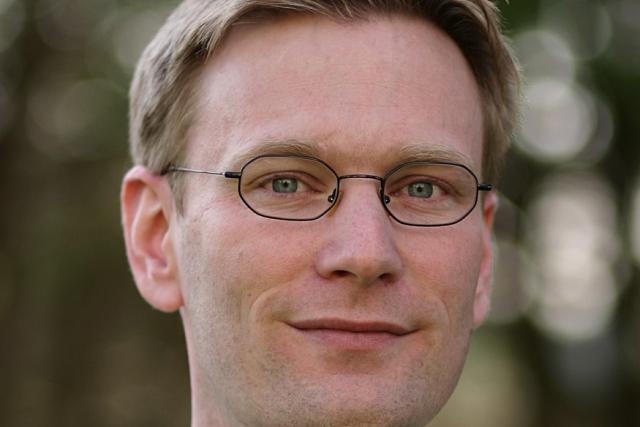
Want to dive deeper into urban ecology?
Explore a selection of academic literature and media reports related to the research of Sascha Henninger:
Sascha Henninger & Stephan Weber (2020): Stadtklima Schöningh, 260 pages
>> TO THE E-BOOK
Sascha Henninger (2011): Stadtökologie: Bausteine des Ökosystems Stadt, 252 pages
>> TO THE BOOK PUBLICATION
Christian Stolz & Sascha Henninger (2025): Physische Geographie: Eine zeitgemäße Einführung für Lehramtsstudierende, Brill/Schöningh, 256 pages
>> TO THE BOOK ANNOUNCEMENT
Klimazwillinge von RLP: Lebt es sich in RLP in 50 Jahren wie in Südfrankreich?, SWR Aktuell, February 26, 2025
>> TO THE VIDEO REPORT
Planung einer klimagerechten Stadt mithilfe eines Klimazwillings, 3sat NANO, December 11, 2024 (starts at minute 14:15)
>> TO THE TV FEATURE

Diese Themen könnten dich auch interessieren:
